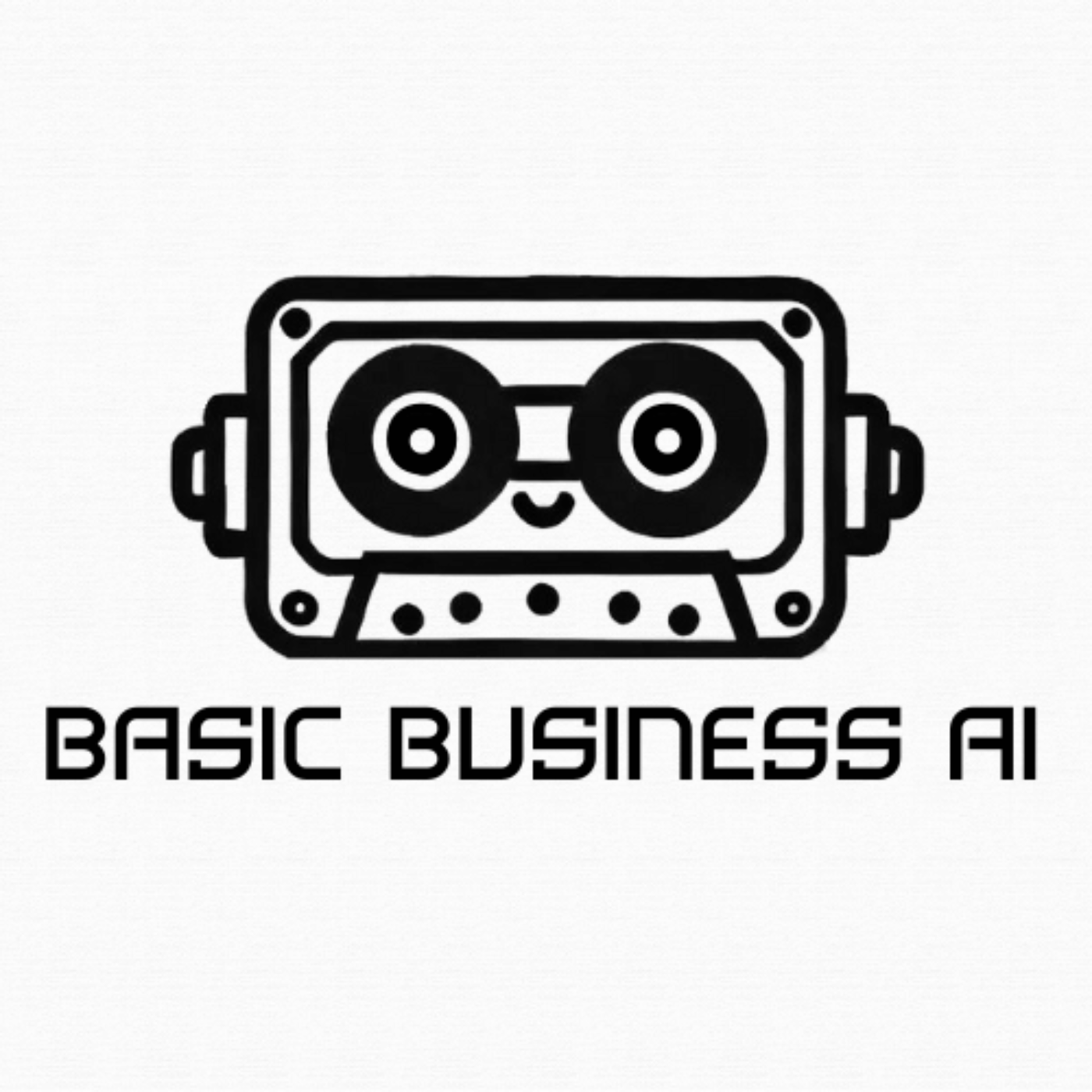Episode Transcript
[00:00:00] Speaker A: Welcome to Basic Business AI, a podcast dedicated to simple AI strategies for businesses who don't want to get an advanced tech degree or hire some marketing bro. I'm your host, Josh Thomas. You can find me on all social media.
We bring on regular business owners just like you me, to discuss practical strategies, ideas, and perspectives about AI without getting too far into the weeds of the tech. BBAI is sponsored by Anabots. Get a trained AI sales and support assistant to work twenty four seven to increase your sales, reduce your costs, and free up your time so you can focus on growing your business. No tech skills needed, and you can get started in less than ten minutes. Go to Anabots AI to learn more. Once again, that's Anabots AI. Today's guest is Paul Sweeney. Paul is the managing director of Pretium Solutions. He brings over 30 years of hands on experience in accounting and business advisory to the forefront. Beyond his role at PreTM Solutions, Paul is a dynamic speaker and host of the business behind your business podcast. Paul, welcome to BBai. I have one question for you. From your perspective. How is AI reshaping the future of your industry?
[00:01:20] Speaker B: Thanks for having me, Josh. Look, AI definitely changing the way that we do things and the way our clients do things. So we work with a lot of clients in different areas.
I've always been a big adapter of technology, trying to improve the processes, the way that we do things, make ourselves more efficient. So always been keen. Like 30 years ago, when I first started, clients didn't have accounting systems in the first desktop software that came in. We launched onto that as quickly as we could. But I guess eight years ago, I think probably more than twelve years ago now, we started to see AI already coming into the tools that we use in our accounting business and that our clients are using. So accounting software went from being desktop based to cloud based with the introduction of Xero. That's Xero and what we saw, and there was a lot of AI features already with automatic coding of your information. So take the, the actual accounting process or the transactional basis of what you were doing away from the business owner and help them, I guess, do those repeat transactions more efficiently, actually understand where to put things? Because it would say, right, okay, you've got this expense, and we know it's a petrol station because all of our other customers are using it as a petrol station.
So we're going to suggest that you code that to motor vehicle expenses. So the business owner is not spending their time doing bookkeeping, but they actually can get on with running the business. So we've already seen AI coming into play even before we start talking about your chat, gpps and all the other AI tools that have now evolved at a rapid rate. Those technologies were already starting to be there in the everyday tools that most business owners were using. So we use accounting software, we use a technology to capture your expenses so you're not having to enter all your invoices into your system. So you've got that real time technology, how it interacts with your bank.
So those technologies were already there. But some of the exciting things that we're seeing now is using the AI tools to add some more streamline to our everyday processes. So tools like using tools to improve our data collection, so reducing the manual steps involved.
And then often we'll get data from a client in one format, but we need it in another format for our systems. So transferring the data from one system to another, we're using a lot of AI tools there to improve that process, improve the accuracy. Accuracy is the biggest gain that we're seeing, not just in time, but accuracy saves us time because we don't have to go and rework. And that's been one of the biggest problems with our industry, the number of times we have to rework items, and it's generally around data entry and data capture. So it's been a big time saving there. Data capture is one big thing, but also automating that response to clients.
How do you respond to somebody?
[00:04:33] Speaker A: Let's separate those two things. Let's talk about data capture first, and let's talk about the actual interaction with the customers, because those are two different topics.
What I heard you saying here is we're collecting all of this information, it's in all of these different formats, and it creates a lot of extra complexity, a lot of inefficiencies. And AI has come in and streamlined a lot of that. What has been the impact on the business owner in this situation, with you, with your accounting firm? What has been the impact there?
[00:05:08] Speaker B: Well, I guess the main impact has been the reduction in the need for physical staff, for headcount. And with so many people finding, well, particularly accounting, an unattractive industry to start going into, we're seeing fewer and fewer people wanting to go into it. So we have to, as an industry, have to be more efficient. So that time saving feature has been really a lifesaver for a lot of accounting businesses or around the world. I would say I'm hearing the same thing from people in every country.
So you like to have your standard processes, but you can be guaranteed that six out of ten clients are not going to want to follow that process because they've got their own way of wanting to do it, or they're using a Macintosh, or they're using Google, or somebody's using Microsoft. So you're getting data in different formats. We get files sent to us from Mac users that can't be opened.
You know, avoiding that backwards and forwards with the customer is critical because you save a lot of that interaction, because often the customer doesn't respond in the time that you need to be able to turn around the job quickly, or they don't always understand why you need it, why you need the data in a particular format. And it's not their concern, they just want you to do the job. So avoiding those risks, fix the number thing.
[00:06:29] Speaker A: I'm not a math guy.
[00:06:30] Speaker B: Yeah, absolutely. It's like when I turn on the light, I don't want to know how the electricity is working, I just want the light to turn on and I can get started straight away.
That's the way when clients give us information to do their accounts, to do their tax returns, they're not interested in the process, they're not interested in what tools we're using. And I think that's also a trap for a lot of businesses, is focusing too much on the tool, but ignoring the fact that the tool supports the process, which is there to provide an outcome. And if you can improve the efficiency of how you get to that outcome in terms of better accuracy, less time, a better quality output, then that's the objective. The tool should support that. So it doesn't really matter which tool you're going to use. You have to choose a tool that's going to help you improve your process.
And that, I think, is where I see a lot of people get it wrong, is that they focus on the tool. Nothing. What's the outcome we're trying to achieve?
[00:07:28] Speaker A: That is a huge arrival point that I think what this entire podcast is all about, basic business, AI. We want to talk about AI, but we don't want to talk about AI the tool. We want to talk about AI as the vehicle to create an outcome. Because if we're focusing on AI being the vehicle to create an outcome, all of a sudden it matters a lot less which tool you're using, which brand it is, or what logo is slapped onto the side of it, because you're focusing on the process and the time that you're saving and the outcome that it produces. And I didn't know this until you just said it, but it seems like AI is rising at the perfect time for accounting, because interest in entering accounting is actually waning. And so it's almost like creating a buoyancy for your industry.
[00:08:26] Speaker B: Absolutely. Look, we've had so many accountants just be overwhelmed with changing regulation over regulation that technology is actually saving, because we're going from having to do a lot of manual processing, spending 12 hours a day, 14 hours a day, to having tools to make that capture more efficient. Get rid of all those pain points and those painful interactions that don't add value to the end result.
But they've been a barrier to getting the work done efficiently and getting a great client experience. So using that technology as a tool has been a real benefit to our industry. And of course, the flow on effect is that our clients get their information, their results, quicker we can turn around that data, quicker we can. Then instead of spending time processing reports, we can actually take those reports and use them with the client to provide a better business outcome. Help them with strategy, help them with planning, and we can again use a different tool to help extract the key data, the key information needed for the strategy from those reports. We're not having to spend hours poring over it. We're not having to spend hours taking it from one system and putting it into another. We've got a seamless interaction and we've gone from being, I guess, our record keepers and score keepers to actually being strategic coaches, which has really helped change the way the industry works, from purely record keeping and compliance to actually providing a lot more value. We've always said we've been great at providing value, but now it's a lot easier to show that.
[00:10:07] Speaker A: Now it's actually true.
[00:10:10] Speaker B: Absolutely.
[00:10:11] Speaker A: So you hit on another good point here, Paul, is if our job is to turn a crank, then the only thing we're ever able to do is turn the crank, because if we walk away, the crank stops turning. But if we can get a machine to turn this crank for us at a very high level, then that frees us up to focus on customer service and building a relationship and escalating the value of our time to those higher level tasks that have nothing to do with turning the crank. You want to make sure the cranks turning correctly, but that's even, that is a higher level task than turning the crank itself. And so that's where we're elevating ourselves to a higher level of skill and value by delegating some of this to machine learning and AI.
[00:10:59] Speaker B: Yep, absolutely, absolutely. I guess the other thing with machine analogy there, Josh, is that machines need maintenance and the connections between your systems do need to be maintained and checked. We use a lot of tools that interact with each other and what we find is that when one upgrades their technology, often one of the links goes out of system or out of sync. So you then need to refine that. So just it's not a set. And forget always, because technology is evolving, you need to be aware of what's changed and how that influences the other parts of your process.
So recently, end of financial year for us, we had one of our core technology partners update their systems and a lot of the some new features, but it actually broke the connection with three or four other tools that we use that are key to our process. So we then had to identify how we fix that, or how do we need to actually change parts of our process. So maintenance of the system and making sure it is still working the way that you intend it to work and delivering the same outcomes, that's a key thing that a lot of people, I guess, overlook in that designing their processes.
[00:12:16] Speaker A: Awesome. I love that. And so tell us a little bit more, Paul, about what you do and how people can connect with you.
[00:12:22] Speaker B: Yeah, so I think it's come through while we're accountants, but my passion's always been about advising businesses, particularly small and medium business owners, about how they can improve their business grow with strategic help being growing strategically. And a lot of the tools that we've been talking about, or we haven't actually been talking about tools specifically, but that using AIH as a way of actually making those, I guess the high end services affordable to small medium businesses, that's what it's about.
But even still, how do I get the news out to more people? Well, that's why we created the podcast, particularly during COVID That's when we started that. But there's an idea of getting quality business advice from recognised professionals out to as many people as possible in the the most efficient way. And podcasting is a great tool for that. And in the podcasting that we do, we've used a lot of AI tools to speed up that process because it's not a core service for us. So we created the business behind your business for business owners. And that's one of the love jobs I have. It doesn't bring a lot of income, but it's something that we're passionate about getting the services, the advice out to small medium business owners everywhere.
[00:13:36] Speaker A: Awesome. And where can we go to connect with you?
[00:13:40] Speaker B: I think the easiest way to find me is go to paulsweeneyaccountant AU and that will link to the predium solutions, accounting and business advice, and the business behind your business podcast. But Paul Sweeney accountant is a lot easier to find than premium solutions because people misspelled Paul Sweeney accountant is pretty easy to find.
[00:14:04] Speaker A: Okay, very well. Hey, we're going to wrap up from here. Thanks so much to our guest Paul Sweeney, for joining us for a practical conversation about AI and its potential for business and how it can get you to stop turning that crank so much and focus on customer service. For those of you who want to connect directly with him, you can go to paulsweeneyaccountant Au. And if you do run a business of any size and you have some ideas or strategies about the topic of AI, we'd love to have you on a future episode as well. We interview business owners of all levels of experience and exposure to AI so we can represent all voices, especially the 80% to 90% of us who are curious about AI but not trying to be tech geniuses. Apply for a future episode by going to basicbusinessai.com. and one more time, if you want to install a sales and support team for less than 10% of the cost of a single employee, or if you're in an industry where there's less people interested and you need some more AI to help cover the gap, get yourself an anabot. You can learn more at anabots AI. We'll see you next time here on basic business AI. And by the way, if you like this episode, hey, tell your friends. See you later.



